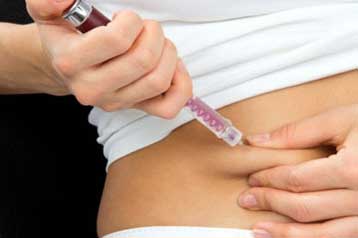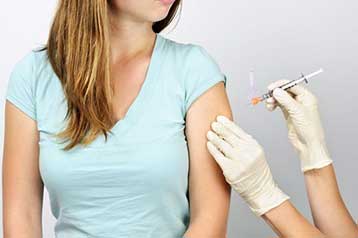Required Evaluation Components: Other Sexually Transmitted Diseases
Technical Instructions for the Medical Examination of Aliens in The United States
The Centers for Disease Control and Prevention(CDC), United States Public Health Service (PHS), is responsible for ensuring that aliens entering the United States do not pose a threat to the public health of this country. The medical examination is one means of evaluating the health of aliens applying for admission or adjustment of status as permanent residents in the United States.
These instructions are for the use of civil surgeons and U.S. Department of Homeland Security (DHS) officials who are evaluating aliens applying for adjustment of status to permanent resident, and any other alien required by DHS to have a medical examination. This document supersedes the June 1985 Guidelines for Medical Examination of Aliens in the United States.
III. Required Evaluation Components
-
Communicable Disease of Public Health Significance
-
Other Sexually Transmitted Diseases (Chancroid, Gonorrhea, Granuloma Iguinale, Lymphogranuloma Venereum)
- Required Evaluation
The medical history and physical examination must include a search for symptoms or lesions consistent with chancroid, gonorrhea, granuloma iguinale, or lymphogranuloma venereum. Further testing should be done as necessary to confirm a suspected diagnosis.
- Reporting Results
The applicant must be treated using a standard treatment regimen (see treatment)) before the medical report form is completed. Mark the results of testing and write medication, dose, and date of treatment on the medical report form.
Once the recommended treatment is completed, chancroid, gonorrhea, granuloma iguinale, and lymphogranuloma venereum are neither Class A nor Class B conditions.
-
Treatment
-
Chancroid*
Erythromycin: 500 mg orally, 4 times a day for 7 days
Or
Ceftriaxone: 250 mg (IM) in a single dose
Gonorrhea*
Ceftriaxone: 250 mg (IM) in a single dose
And either
Doxycycline: 100 mg orally, twice a day for 7 days
Or
Tetracycline HCI: 500 mg orally, 4 times a day for 7 days total (total dose 14.0 g)
(The doxycycline/tetracycline therapy is treating Chlamydia trachomatis, which is frequently a co-infection in patients who have N. Gonorrhea.)
Doxycycline/tetracycline should not be used in pregnant patients. They should take Erythromycin base 500 mg orally, 4 times a day, for 7 days.
If there is a history of allergy to ceftriaxone, spectinomycin 2.0 g, (IM) should be used, followed by doxycycline.
*All listed treatments are for adults with uncomplicated infections. For alternate drug regimens, treatment of complicated infections, treatment of pregnant women, and treatment of persons with allergies to the recommended drugs, refer to the Centers for Disease Control, 1989 Sexually Transmitted Disease Treatment Guidelines, MMWR 1989; 38 (No. S-8).
Granuloma Iguinale*
Tetracycline HCI: 500 mg orally, 4 times a day for at least 3 weeks
Or
Streptomycin: 1 gram (IM), 2 times a day for at least 3 weeks
If the antibiotic is effective, the lesion should be clinically resolving by day 7. Therapy should be continued for a minimum of 3 weeks or until lesions have completely healed.
Lymphogranuloma Venereum*
Doxycycline: 100 mg orally, 2 times a day for 21 days
Or
Tetracycline HCI: 500 mg orally, 4 times a day for 21 days
Or
Erythromycin: 500 mg orally, 4 times a day for 21 days
- Required Evaluation
-
*All listed treatments are for adults with uncomplicated infections. For alternate drug regimens, treatment of complicated infections, treatment of pregnant women, and treatment of persons with allergies to the recommended drugs, refer to Centers for Disease Control, 1989 Sexually Transmitted Disease Treatment Guidelines. MMWR 1989; 38 (No. S-8).
- Page last reviewed: March 29, 2012
- Page last updated: August 3, 2010
- Content source: Centers for Disease Control and Prevention
National Center for Emerging and Zoonotic Infectious Diseases (NCEZID)
Division of Global Migration and Quarantine (DGMQ)
Source
Required Evaluation Components: Other Sexually Transmitted Diseases
Centers for Disease Control and Prevention
GeoSalud, March 30, 2013






